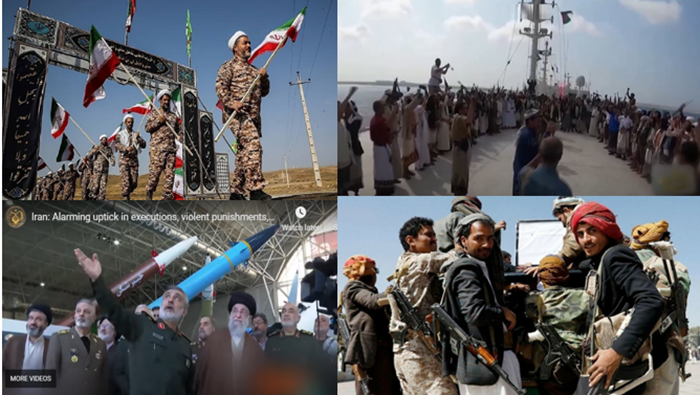

According to The Washington Post, which cited Lebanese and Iraqi officials, Iran’s call for moderation comes in the wake of US retaliation against these groups’ attacks. This development is underscored by a two-week hiatus in the hostilities, a marked change from the over 150 attacks attributed to Iraqi and Syrian militant groups against American forces following the war’s escalation in Gaza.
Despite this apparent pause in aggression from certain factions, the Houthi rebels in Yemen, also backed by Tehran, have not shown a similar inclination towards restraint. These rebels have been implicated in around 50 attacks on commercial vessels in the Red Sea, posing a significant threat to both commercial and naval security in the area. This contrasts sharply with the actions of groups like Kataib Hezbollah, which, after a deadly drone attack in Jordan, announced a cessation of hostilities—albeit temporarily and under apparent pressure from Iran.
#Iranian Regime’s Fourfold Objectives in the #GazaCrisishttps://t.co/UXfRouGv2b
— NCRI-FAC (@iran_policy) November 9, 2023
The cessation was short-lived, however, as a retaliatory strike by the US that killed a leader of Kataib Hezbollah led to the reversal of their announcement. The umbrella organization known as the Islamic Resistance in Iraq, which includes Kataib Hezbollah, has also rejected calls for calm, indicating the complex network of allegiances and pressures within the so-called “Axis of Resistance” backed by Iran.
Iran’s involvement in these conflicts is becoming increasingly direct, as highlighted by the former head of US military forces in the Middle East, Vice Admiral Brad Cooper. In an interview, Cooper noted the presence of IRGC members in Yemen, assisting the Houthi with planning and executing attacks, underscoring Iran’s hands-on role in the conflict.
The situation is further complicated by Iran’s growing stature as an arms exporter. Reports of significant arms shipments to the Houthi rebels, alongside official sales that rank Iran as the 16th largest arms exporter globally, underscore the dual nature of its approach to regional influence. With exports and smuggling operations valued in the billions, Iran’s relationship with its proxies and allies like Russia continues to evolve, raising concerns among US and its allies.
NCRI Conference Exposes #IRGC Quds Force Proxy Naval Unitshttps://t.co/INQ0G6JwSG
— NCRI-FAC (@iran_policy) November 6, 2023
Despite these challenges, the West’s strategy seems to hinge on de-escalation and containment, hoping firepower alone can address the underlying issues. However, the enduring motivations behind Tehran’s support for proxy wars and its internal challenges suggest a more complex reality. As Iran navigates internal unrest and external pressures, the path to resolution remains fraught with uncertainty, highlighting the intricate dance of power and pressure that defines the region’s geopolitics.

MEK Iran (follow us on Twitter and Facebook), Maryam Rajavi’s on her site, Twitter & Facebook, NCRI (Twitter & Facebook), and People’s Mojahedin Organization of Iran – MEK IRAN – YouTu







